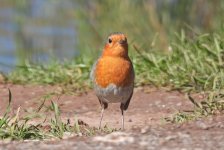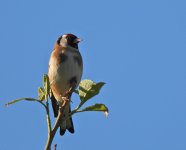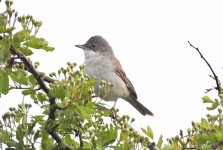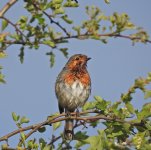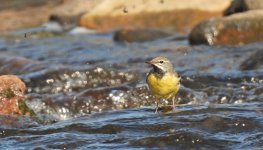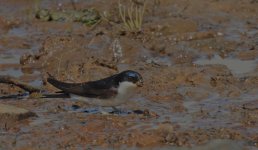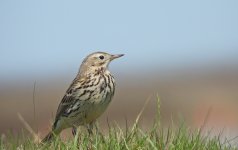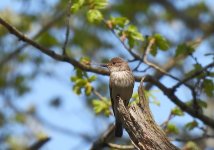PaulCountyDurham
Well-known member

I talked with a few people who gave some good advice and said they'd be interested in seeing the results.
We've had awful weather here, and so I still don't really know what this camera is like with a run of good light. Because there's been an hour or so of sun here and there I've been snatching a bit at pictures, knowing the grey skies are 'round the corner pretty sharp, and 'not able to get my eye in.
The goldfinch is in good light but he's swaying in the wind on the branch and I've tried to follow him; the robin is in good light but just as I'm taking the picture he/she has jerked his head up from a position of pecking around on the ground. The camera is supposed to have a good image stabilisation system, however: how much it has nullified the movement I've no idea at the moment. The whitethroat is in really bad light and I've tried ISO 800 which is more than usual for me: someone who does a bit of editing could probably get a lot out of this camera in bad light.
All I can say at the moment is the camera is much better than the FZ330 in bad light and the signs are it will be much better in good light. When I get a good run of light where I can take my time I'll have a better idea then. 'Bank holiday Monday is 'round the corner, surely we'll get one full day of sunlight in three!
We've had awful weather here, and so I still don't really know what this camera is like with a run of good light. Because there's been an hour or so of sun here and there I've been snatching a bit at pictures, knowing the grey skies are 'round the corner pretty sharp, and 'not able to get my eye in.
The goldfinch is in good light but he's swaying in the wind on the branch and I've tried to follow him; the robin is in good light but just as I'm taking the picture he/she has jerked his head up from a position of pecking around on the ground. The camera is supposed to have a good image stabilisation system, however: how much it has nullified the movement I've no idea at the moment. The whitethroat is in really bad light and I've tried ISO 800 which is more than usual for me: someone who does a bit of editing could probably get a lot out of this camera in bad light.
All I can say at the moment is the camera is much better than the FZ330 in bad light and the signs are it will be much better in good light. When I get a good run of light where I can take my time I'll have a better idea then. 'Bank holiday Monday is 'round the corner, surely we'll get one full day of sunlight in three!




